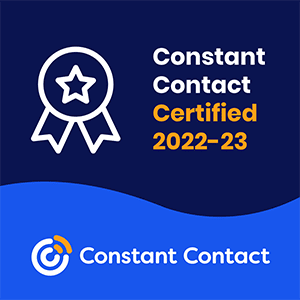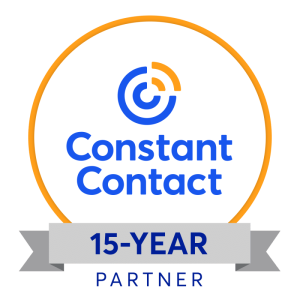No matter what kind of entrepreneur you are or what type of business you have, there are likely lots (and lots) of others who do the same thing you do. That’s why it’s so important to differentiate yourself from your competition in all ways you can.
As of last count, there are more than 48,000 other PR firms in the United States in the public relations space. Many of these compete with my agency in the five hub cities where I operate. Yet mine consistently ranks among the highest in those cities—Nashville, for example.
Is it because I know my industry better than my competitors? Because I land more placements for my clients? Is it because my team is more talented, or is my network of connections more expansive? As much as I’d like to think that I’m running with the front of the pack based solely on the quality of my services and the effectiveness of my methodologies, it’s far more likely that I earn rave reviews and generate referrals from my clients due to two words: personalized attention.
More specifically, my team and I go well above and beyond to create an exceptional customer experience at my firm because I’ve learned over the years of running my own business that it’s the client’s impression of you that matters most — that’s what informs all other aspects of customer relations, drives all other client decisions and determines if they’ll stay with you or not (even more so than short-term results).
Related: This Is Why Word-of-Mouth Referrals Should Be Your Number One Metric of Success
1. Get a copy of your client’s org chart
When you understand the structure of your client’s business, you know who does what, who reports to whom, and, in turn, who to go to for what. Not only is this an immense time-saver — as in not filling people’s inboxes unnecessarily with work that doesn’t pertain to them — but your clients will also appreciate that you did your homework on their staffing. It’s so much more impressive to send a note that says, “Would your team like to see this before we send it up to Jeremy?” or “I believe Bettina has the final sign-off here” than “Are you the right person to contact about this?” And note the use of actual names here — learning the first names of everyone you’ll be working with moves you into first place faster than you’d think.
2. Use proper grammar and punctuation
Ensure that all your communications to your client — and, far more importantly, all the communications you prepare on their behalf — are correctly written. Yes, it takes some extra work to eliminate errors. Still, it’s worth the effort when you consider how much just one typo can mar an entire project (ever seen “pubic” instead of “public”?) and how poorly faulty grammar can reflect on quality output, education level, and attracting the intended audience.
Though it may be true that language standards are slipping in America, that doesn’t mean nobody’s noticing the shoddy quality of copy. Some people still see and care. If your client is one of them, you’ll earn bonus points by knowing the difference between “compliment” and “complement” by not allowing both “San Antonio Riverwalk” and “San Antonio River Walk” in the same publication. Use your grammar checker. Always do a spell-check. Re-read everything you produce. And if you don’t have a language maven on staff to serve as your in-house proofreader, hire an affordable freelancer who can provide quick turnaround times.
Related: 5 golden rules of copywriting
3. Choose video over audio
Schedule video and videoconference meetings over phone calls and phone meetings whenever possible. The day and age of in-person meetings is quickly becoming obsolete. Still, there will never be a replacement for face-to-face interaction, eye contact, observing facial expressions, and showing your client with every head nod and eyebrow raise that you’re following what they’re saying and closely attending to your conversation.
During the pandemic, cultivating one-on-one relationships over Zoom and Teams became the new norm, and most people accept leaving it that way! Interacting over a screen instead of a conference table is more convenient, time-effective, and environmentally friendly. Nevertheless, we can’t afford to lose the “one-on-one interaction” part of business relationships. Remember the old Bell advertising slogan? Well, video is the modern-day equivalent of “the next best thing to being there,” so leverage your camera as often as possible to “see” your clients, not just talk to them.
Related: How to Write a Small Business Video Marketing Storyboard
4. Mark your calendar!
Notate birthdays, business anniversaries, and baby due dates. Keep a record of your client’s big meetings and conference attendance. On those days, send a person-to-person text or email. The more specific, the better, such as “Hope your coffee product presentation in Jersey went well, and the traffic wasn’t too bad on the Parkway!” Or “Congrats on baby Elliot. That was my grandfather’s name, and I hope it serves your brand-new son as well as it did him.”
Incorporating the personal into the professional, which is a pillar of my approach at my company, helps clients value your role more because you’ve actively endeavored to become part of their lives, not just an appendage of their business. In other words, when you add personal touches to your communications and conversations, your clients can’t help but think of you on a more human level rather than just a professional contact with whom they can easily cut ties.
Related: 6 Strategies for Making a Good First Impression During Business Meetings
5. Observe the line between personal and professional, but use both — often
On a related but separate note: As much as I’m saying to weave personal connections into your daily dealings with your clients, you never want to go too far. You can use humor, but not off-color humor. You can show vulnerability but don’t want to appear weak or indecisive. You can ask questions and admit what you don’t know, but be strategic (not lazy) about trying to resolve issues yourself before coming to your clients with them. And be yourself, always genuinely yourself, but don’t expose so much that you cross the line into over-intimacy or inappropriate divulgence.
You will put a personal face on your business name by speckling your client interactions with individual touches while maintaining proper decorum. That name will leave more of a mark on your customers precisely because of your adept balancing act between the personal and the professional.
Part of making a meaningful impression on your clients is consciously putting your best face forward every day, in every way. Don’t let them see a messy office behind you on Zoom, but let them vent about their kid’s tonsillitis for 10 minutes if needed. Don’t bad-mouth other clients or finger-point when things go wrong, but get to know them well enough that you’d love to grab a drink next time you’re in town.
Take every opportunity you can to show your clients — and then remind them often — that “business as usual” to you means being prepared (as in learning an org chart), producing quality output (that’s been proofed), scheduling face-to-face encounters, observing special occasions in their lives and sharing your authentic self, who happens to be a multifaceted, wonderful human being with flaws who’s also an utter professional and a real pro at what you do!
Related: 10 Customer Retention Strategies For Essential Growth in 2024

Article by Emily Reynolds Bergh
Founder at R Public Relations Firm












.png)














Leave A Comment
You must be logged in to post a comment.